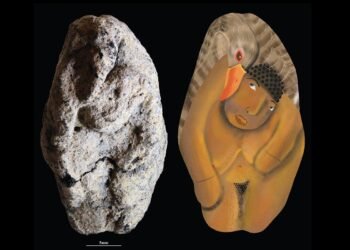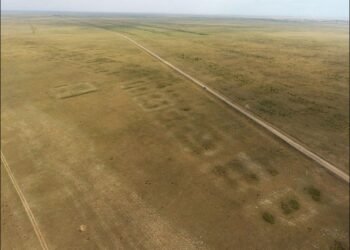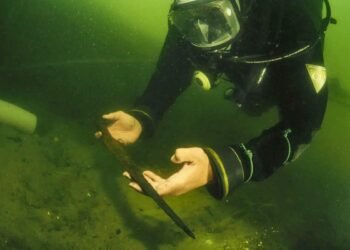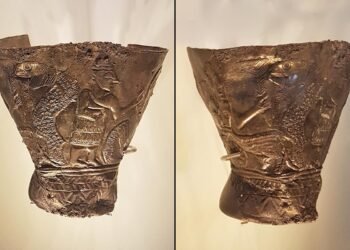A groundbreaking new study has found that pregnancy in the Viking period was far more complex, politicized, and socially significant than previously assumed. The research, published in the Cambridge Archaeological Journal, is the first such in-depth interdisciplinary study of pregnancy in Viking societies and sheds light on a widely overlooked subject in archaeological studies.

Led by Dr. Marianne Hem Eriksen of Leicester University and Dr. Katherine Marie Olley of Nottingham University, the study applies a wide range of evidence—from Old Norse sagas to legal documents, burial records, and artistic representations—to uncover how pregnant bodies were conceived, depicted, and treated within Viking society.
The researchers explored literary depictions of pregnancy that challenge conventional assumptions. In The Saga of the People of Laxardal, the pregnant Guðrún Ósvífrsdóttir is smeared with a bloody spear by her husband’s killer, who taunts her by saying that his death is already growing in her womb. The child subsequently fulfills this prophecy by avenging his father’s murder. In another saga, Freydís Eiríksdóttir, pregnant and unable to flee from an attack, grabs a sword, bares her breast, and strikes it with the weapon, scaring off her enemies. Dr. Olley noted that Freydís’s defiant act may be paralleled by a Viking Age silver figurine discovered at Aska in Sweden, depicting a pregnant woman in a female dress, wearing what appears to be a martial helmet.
This figurine, the only known compelling depiction of pregnancy in the Viking Age, upsets the idea of passive, domesticated motherhood. Instead, it suggests a cultural space in which the pregnant body was visible and symbolically potent, intertwined with notions of violence, identity, and resistance.

But the realities of pregnancy were not purely symbolic or heroic. The study also refers to the social inequalities surrounding childbirth. Among thousands of Viking burial sites, only 14 likely mother-infant burials have been discovered—surprisingly few for a time when infant and maternal mortality would likely have been incredibly high. Infants are more commonly discovered in unconventional contexts, such as buried with adult males or elderly females, or within domestic dwellings. Dr. Eriksen observed that “mothers and babies were not buried together routinely,” and that numerous infants appear to have gone unburied altogether, at least by the standards applied to adults.
The study also investigates how pregnancy intersected with status and slavery. Pregnancies of enslaved women in Viking legal texts were viewed as defects when being sold, and babies born to enslaved or subordinate women were considered property. This dehumanization points to how vulnerable the pregnant body was, not only in a biological manner, but socially.
In short, the study calls for a rethink of what topics archaeology considers central. As the researchers argue, bodies and experiences often dismissed as “biological” or “private” might be charged with powerful political significance. “Politics do not only happen on battlefields or through state formation,” the authors write. “Exploring the body-politics of pregnancy can provide insights into ideas of kinship, sexuality, gender, personhood, and inequality.”
The study encourages scholars to reconsider how marginalized bodies have been excluded not only from burial but also from scholarly narratives.
























I guess the usage of term “pregnant body” is one real dehumanization of woman…
Shouldn’t the infrequency of mother-infant burials indicate that mortality was NOT high for these particular people? Perhaps they had better pregnancy and birth practices than the rest of the world.
An interesting topic, with a few things to consider- Fewer infant internments might indicate a lower mortality rate. This could be due to the cleaner habits thought to be in use at the time.
It could also be due to a different set of beliefs for infants. Other cultures used clay vessels to keep their infants remains, or sent them to rest in the waters or fire to come back.
Is there a culture that pregnant slaves are treated differently than pregnant livestock when being sold?
The pregnant warrior, and the unborn offspring of a wrongly killed father are both heroic tales. The pregnant mother dealt with reality that she was physically limited so she fought, using what was available to her and insulting the men who were fleeing.